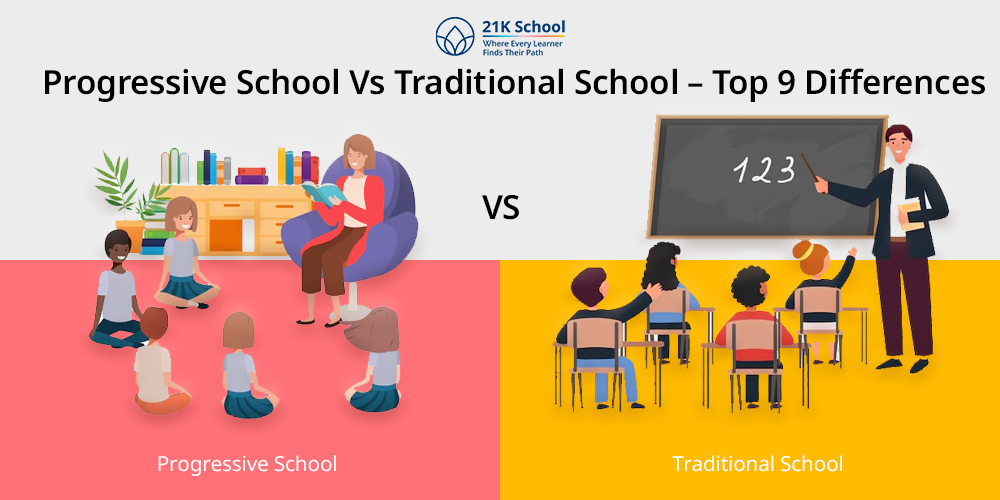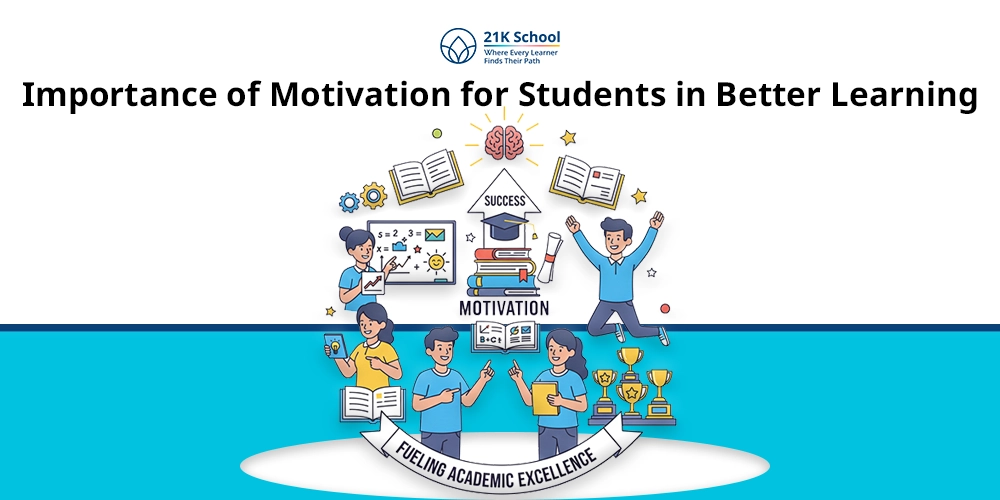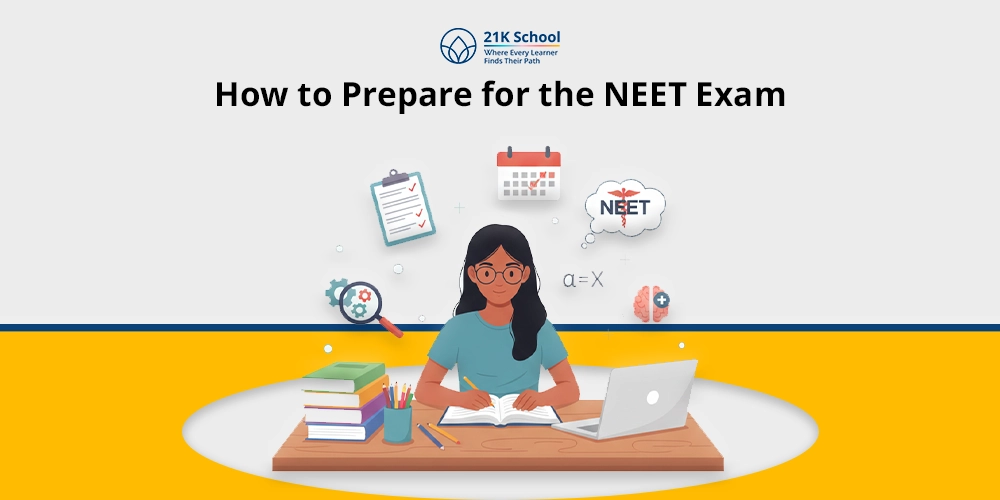
Selection of the right school for your kid can feel like standing at a crossroads and don’t know which path is correct for future growth.
On one side, you have traditional schooling techniques like structured, familiar, and often focused on discipline and academic performance.
On the other hand, progressive schools which promise to improve creative thinking skills, flexible learning, and a student-first approach that nurtures curiosity and emotional growth.
So, which one’s better for your child in the 21st century?
It depends because each child is different, and so is every parent’s expectation. Some kids look for a structured environment with clear rules and study routines . While others want more flexibility and freedom to explore and learn at their own pace.
As a parent, you want to make sure your child not only performs well in both academic and personal life and lives a confident, capable human being.
Let’s together break down the key differences between traditional and progressive schools. Also, highlight their pros and cons and help you decide which method is best for your child’s unique needs and learning style .
Contents
What is a Progressive School?
Progressive schools are a student-centered, experiential learning of learning. It focuses on holistic development and critical thinking skills instead of traditional rote memorization.
Facilitators motivate learners in active participation, collaboration and the development of practical skills with academic knowledge.
Focus on:
- Child-centered learning.
- Flexible and dynamic curriculum.
- Emphasis on problem-solving and collaboration.
- Fostering creativity and curiosity.
- Teacher as a facilitator rather than a sole authority.
Example: Progressive schools such as Waldorf, Montessori, or Reggio Emilia-inspired institutions showcase progressive models.
Here, students learn through exploration, real-life experiences and collaborative projects.
What is a Traditional School?
A traditional school is a kind of formal educational setting that provides structured learning in a classroom, under the rights and regular assessment .
It focuses on teacher-led instruction, rote learning , and a fixed schedule.
Focus on:
- Structured learning environment.
- Uniform curriculum across all grades.
- Emphasis on memorization and standardized testing.
- Teacher-centered approch .
- Defined classroom hierarchy.
Example: A government-recognized CBSE or ICSE school in India offers a systemic and strict syllabus , maintains fixed schedules and uses textbooks and examinations to evaluate learners.
To know which is the best board for you must read the comparison between NIOS vs CBSE and IGCSE vs CBSE for making the right decision.
Progressive School V/S Traditional School: A Comparison Table
Progressive and traditional schools differ significantly in their teaching philosophies and approaches.
Traditional schools emphasize teacher-led instruction, rote memorization, and standardized testing.
On the other hand, progressive schools focus on student-centered learning, critical thinking, and hands-on activities. Here’s a detailed table outlines the key distinctions:
| S No. | Particulars | Traditional School | Progressive School |
| 1. | Teaching Approach | Traditional school follows a teacher-centered approach, authority-led, lectures and instructions dominate. | Progressive school follows a student-centered approach, facilitator role which encourages exploration, dialogue, and collaboration. |
| 2. | Curriculum | The curriculum is fixed, standardized and aligned with state/board guidelines. | The curriculum in progressive school is flexible, interdisciplinary, evolving based on student interests and real-world relevance. |
| 3. | Discipline | Traditional school focuses on obedience, rules, uniforms, and routines. | Progressive school encourages self-discipline, responsibility, and mutual respect. |
| 4. | Assessment | Assessment in traditional school involves periodic exams, grades, and marks; performance-driven. | Assessment in progressive school involves continuous evaluation through projects, presentations and portfolios. |
| 5. | Technology Integration | Technology integration is minimal or supplementary. It is used mainly for labs and computer classes. | Technology is actively integrated. Several digital tools, coding, gamified learning and smart classrooms are included. |
| 6. | Classroom Environment | The classroom environment in traditional school is formal, structured seating, with a teacher at the center. | The classroom environment in progressive school has flexible seating, interactive spaces; encourages collaboration and movement. |
| 7. | Learning Style | The learning style here is mostly focused on memorization, repetition, and recall. | The learning style in progressive school focuses on experiential learning, critical thinking, and hands-on activities. |
| 8. | Personality Type | Traditional school is best for structured, obedient, goal-oriented learners. | Progressive school is ideal for curious, creative, self-driven and emotionally expressive students. |
| 9. | Academic and Career Goals | Prepares students for competitive exams, traditional professions (doctor, engineer). | Prepares students for innovation, entrepreneurship, research, creative industries. |
Here’s an in-depth elaboration helps you to understand the basic difference between progressive school v/s traditional school:
1. Teaching Approach
In traditional schools the most used is a teacher-centered approach. Here the educators act as the main authority person.
All the lessons are based on lecture and learners are expected to listen carefully, take proper notes and follow instructions as mentioned.
While in progressive schools a student-centered approach is used. Here, they act more as facilitators.
This approach encourages exploration, dialogue, critical questioning, and collaborative learning among students.
2. Curriculum
The type of curriculum traditional schools use is fixed and standardized. It is curated in alignment of state or board guidelines.
It often prioritizes academic rigor and exam readiness. Traditional curriculum is sometimes ideal for its disciplinary techniques.
But, in progressive schools learners get a flexible learning and interdisciplinary learning that evolves based on student interests and focus on real-world relevance.
This allows learners to connect classroom knowledge with life experiences.
3. Discipline
In traditional schools discipline comes with a structured system emphasizing obedience, adherence to rules, uniforms and study routines.
While in progressive schools, classroom discipline is connected with self-regulation, responsibility and mutual respect of each other.
This helps learners to understand the reasons behind rules and make conscious behavioral choices. Also, explore the importance of discipline in students .
4. Assessment
Assessment in traditional schools is based on periodic examinations, students marks and grades as a way to assess their performance.
These are often used to rank or filter students according to their marks.
On the other hand, progressive schools choose continuous assessment methods.
For example: projects, presentations and portfolio. This will evaluate creativity and application which promotes a more comprehensive analysis of student growth.
5. Technology Integration
Technology in education plays a less, minimal or supplementary role in traditional schools. For example teachers only take computer classes or science labs.
While in progressive schools integration of technology is higher across subjects.
Use of various tools such as online learning platforms , coding programs, gamified learning , and smart classrooms systems to enhance student engagement and innovation.
6. Classroom Environment
In a traditional school, the classroom environment seems formal and structured. It means learners are seated in rows and the teacher sits in the front as the mentor to provide knowledge.
On the other hand, progressive schools offer flexible, interactive spaces in the classroom. Learners get dynamic seating arrangements, collaborative zones and a supportive atmosphere.
7. Learning Style
In traditional schools learners are often engaged in rote learning. The main focus is on memorization, repetition and recall to perform well in exams. Sometimes this works well but not for practical experience.
While in progressive schools facilitators use learning style mainly focuses on hands-on and experiential learning activities .
It promotes critical thinking, problem-solving and deeper understanding through real-life applications and inquiry-based learning.
8. Personality Type
The personality type of traditional schools is structured, obedient and goal-oriented learners.
On the other hand, progressive schools cater to curious, creative, self-motivated, and emotionally expressive students. It provides space for each individual to diverse talents.
9. Academic and Career Goals
The main focus of traditional schools is based on preparing learners for competitive exams. They also encourage conventional career paths like engineering, medicine, or government services.
On the other hand, progressive schools aim to prepare students for innovation-driven fields, fostering entrepreneurship, research, creative industries etc.
Pros and Cons of Progressive Schools
Progressive schools is a popular experiential learning designed as a student-centered approach. It offers numerous benefits like enhanced critical thinking, creativity, and social-emotional development.
However, they may also include some challenges, such as potentially neglecting foundational skills for some students, requiring greater self-direction etc.
Some common pros and cons of progressive schools such as:
Pros
1. Student-Centered Learning
Progressive schools provide student-centered learning which foster a more engaging, effective and personalized educational experience for learners.
This approach ensures students to participate actively, collaborate with others and the development of critical thinking and lifelong learning skills. Also, explore different ways to promote lifelong learning .
These schools promote creative thinking skills , adaptability and a sense of responsibility. This ultimately prepares learners for a rapidly growing world.
2. Improved Social and Emotional Development
These kinds of schools prioritize social and emotional development by fostering empathy , collaboration, and self-awareness .
It also guides learners to build strong relationships, manage emotions and develop into well-rounded individuals prepared for future problems.
3. Inquiry-Based Learning
Inquiry-based learning is an important part of progressive education. It provides various advantages for students.
These include enhanced critical thinking, problem-solving skills , and creativity as well as improved communication and engagement.
It also fosters a deeper understanding of complex topics, connects learning to real-world applications and promotes a love for learning.
Cons
1. Lack of Structure
One of the common criticisms progressive schools students face is their potential lack of structure.
This leads to challenges for both learners and facilitators due to lack of structure may manifest as a less defined curriculum, fewer standardized assessments and a greater focus on student-led learning.
All these hinder the development of foundational skills or cause inconsistency in academic progress.
2. May not be suitable for all learning styles
Progressive schools have a lot of benefits such as personalized and experiential learning. However, these may not be the best fit for all learners.
It is due to potential drawbacks such as a lack of structured routine, less emphasis on competition and challenges for learners who thrive on traditional assessment methods.
Some learners may also struggle with the open-ended, collaborative, and flexibility in learning nature of progressive learning environments.
3. Social Pressure and Distractions
Progressive schools have challenges related to social pressure and distractions.
Learners sometimes experience pressure to conform to peer norms in a less structured environment and the focus on student-led learning can sometimes lead to distractions and difficulty focusing on core academic tasks.
Pros and Cons of Traditional Schools
Traditional learning is an ideal way which includes in-person classes and a structured curriculum. It offers both advantages and disadvantages for learners.
Also read, what is the difference between e-learning vs traditional learning .
Social interaction, hands-on experience, and the development of discipline and routine are key benefits of traditional education .
However, it can be rigid, lack flexibility, and may not cater to all learning styles. Here’s a detailed information of pros and cons:
Pros
1. Socialization and Peer Interaction
Traditional schools provide strong socialization and peer interaction opportunities.
Here students improve relationships, develop communication skills , collaboration skills , and learn teamwork, empathy, and conflict resolution through classmates interaction, which are crucial life lessons.
These collaborations are considered important for building good connections and preparing students for future growth.
2. Teacher Expertise and Support
Traditional schools offer a structured learning environment with experienced facilitators who can offer direct, personalized guidance and feedback to each learner.
Also read the benefits of personalized learning in students’ education.
This will help in improvement of student engagement, enhanced conceptual learning, and holistic personal development.
The structured and positive learning environment also helps in discipline, routine and strong student-teacher relationships .
3. Discipline and Routine
Traditional schooling improves discipline and routine in students’ lives. This leads to various advantages such as structured learning environments, improved time management skills , and the development of crucial social skills through peer interaction.
The clear expectations and consequences connected with discipline norms can also reduce stress and create a more stable learning atmosphere.
Cons
1. Limited Flexibility
One major disadvantage of traditional schools or classrooms is their limited flexibility. This can be in terms of scheduling, learning speed etc.
Learners are required to go through strict study timetables and pre-determined course schedules. These may not align with individual learning needs or personal circumstances.
This flexibility can be particularly difficult for learners with diverse learning styles, personal commitments or those who require more time to grasp certain concepts.
2. Rigid Curriculum
Traditional classrooms are their rigid curriculum which may not cater to the diverse learning needs and preferences of all students.
This can lead to learners struggling to keep up and potentially dis-engaging from learning as they prioritize grades over genuine interest.
4. Large Class Sizes
Large class sizes are one of the drawbacks seen in many traditional schooling settings. This led to reduced individual attention for students and increased disciplinary problems.
It can also hinder learning, especially for learners who need extra help or special needs students, making it harder for facilitators to provide effective instruction.
Conclusion
Selection of ideal education and schooling between a progressive and a traditional school depends on your child’s personality, learning style, and future goals.
Traditional schools are an old, better suited way for learners who need clear structure, guidance, and preparation for conventional academic paths. Also, read the comparison between virtual school vs traditional school .
But, we can’t ignore progressive schools. A 21st century approach benefits those who are independent while learning, creative thinkers and emotionally expressive.
Progressive schools are a modern education that plays a crucial role in observing, understanding and supporting your kid’s natural tendencies and learning preferences.
Engage in open conversations with teachers, visit schools, and consider long-term implications while making your decision.
Always remember that the “right” school isn’t necessarily the most popular or prestigious like you have thought. It’s the one that improves your child to grow, explore and dive into the world of dynamic education .


